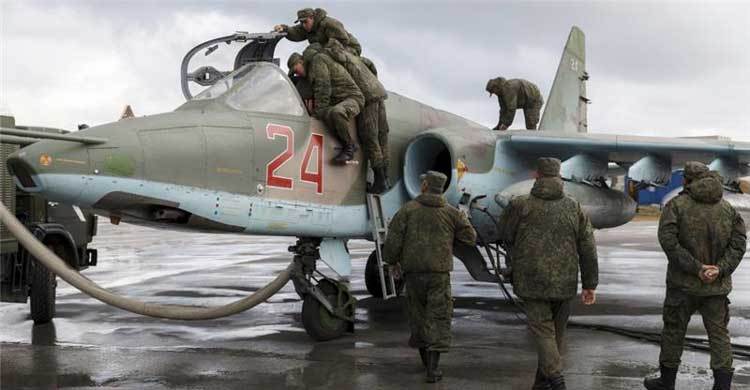Russia bombs Syria rebels from Iran base for first time

Russian jets based in Iran on Tuesday struck targets inside Syria, the Russian defence ministry said, after Moscow deployed aircraft to an Iranian air force base to widen its campaign in Syria.
The ministry said the strikes, by Tupolev-22M3 long-range bombers and Sukhoi-34 fighter bombers, were launched from the Hamadan airbase in western Iran.
It is thought to be the first time Russia has struck targets inside Syria from Iran since it launched a bombing campaign to support Syrian President Bashar al-Assad in September last year, reports Aljazeera.
The move came amid reports in Russian media that Moscow has asked Iran and Iraq for permission to fire cruise missiles at Syrian targets across their territory from the Caspian Sea.
The ministry said Tuesday’s strikes had targeted the Islamic State of Iraq and the Levant (ISIL, also known as ISIS) and fighters affiliated with the group previously known as the al-Nusra Front in the Aleppo, Idlib and Deir el-Zor provinces.
Both groups have been designated as ‘terrorists’ by the United Nations. Last month, al-Nusra Front changed its name to Jabhat Fateh al-Sham and said it had severed a relationship with al-Qaeda.
Russia’s state-backed Rossiya 24 channel earlier on Tuesday broadcast uncaptioned images of at least three bombers and a Russian military transport plane apparently inside Iran, but said it was unclear how many Russian bombers had arrived there.
‘A sizeable military presence’
It said the deployment would allow the Russian air force to cut flight times by 60 percent and increase bombing payloads.
Russian media said the Tupolev-22M3 bombers, which had already conducted many strikes on fighters in Syria from southern Russia, were too large to be accommodated at Russia’s airbase inside Syria.
The Tupolev-22M3 is ‘a fairly large, supersonic, long-range, strategic bomber. It needs a bigger air field than Russia already has in Syria. The previous sorties that this plane has been on have been flown from an airfield in southern Russia, but the problem with that is that it’s 2,000km away from the targets that its striking in Syria. This airfield in Iran is only 900km away,’ Al Jazeera’s Rory Challands, reporting from Moscow, said.
‘The advantage in reducing flight-time, costs, and what the Russians say is the effectiveness of the strikes, makes this a pretty clear tactical decision to make.’
It was also a ‘PR move’, said Challands, meant to reinforce the notion that "there is still enough of a strategic connection between Russia and Iran for them to work closely together in the field of war in Syria.’
The Iranian airbase near Hamadan, sometimes also called Hamedan, is located in north-west Iran and the Russian bombers would have to over fly Iraq to conduct strikes in Syria.
Russian military analyst Pavel Felgenhauer called Moscow’s transfer of heavy bomber planes to Iran a ‘major move’.
‘It’s not just Russian planes touching down in Iran. To establish an operational base, they’d have to move hundreds of servicemen as well. Thousands of tonnes of munitions, fuel, [and] other equipment to operate heavy bombers from an Iranian base. So this is actually Russia establishing a rather sizeable military presence inside Iran,’ he told Al Jazeera from Moscow.
Incendiary weapons
Separately on Tuesday, the New York-based Human Rights Watch accused Syrian government forces and their Russian allies of using incendiary weapons, which burn their victims and start fires, in rebel-held civilian areas of north and north-western Syria.
‘Incendiary weapons have been used at least 18 times over the past six weeks, including attacks on the opposition-held areas in the cities of Aleppo and Idlib on August 7, 2016,’ the rights group said.
Photographs and videos recorded by Human Rights Watch at the time of the attacks indicated there were incendiary weapon attacks on opposition-held areas in the Aleppo and Idlib provinces between June 5 and August 10.
‘Countries meeting at the Convention on Conventional Weapons (CCW) in Geneva on August 29 should condemn the use of air-dropped incendiary weapons ... and press Syria and Russia to immediately stop using incendiary weapons in civilian areas,’ HRW said.
Fighting in Aleppo intensified in early July when government forces captured the last supply route to the rebel-held eastern sector of the city, raising fears that its estimated 250,000 to 300,000 remaining residents could suffer a lengthy siege.


